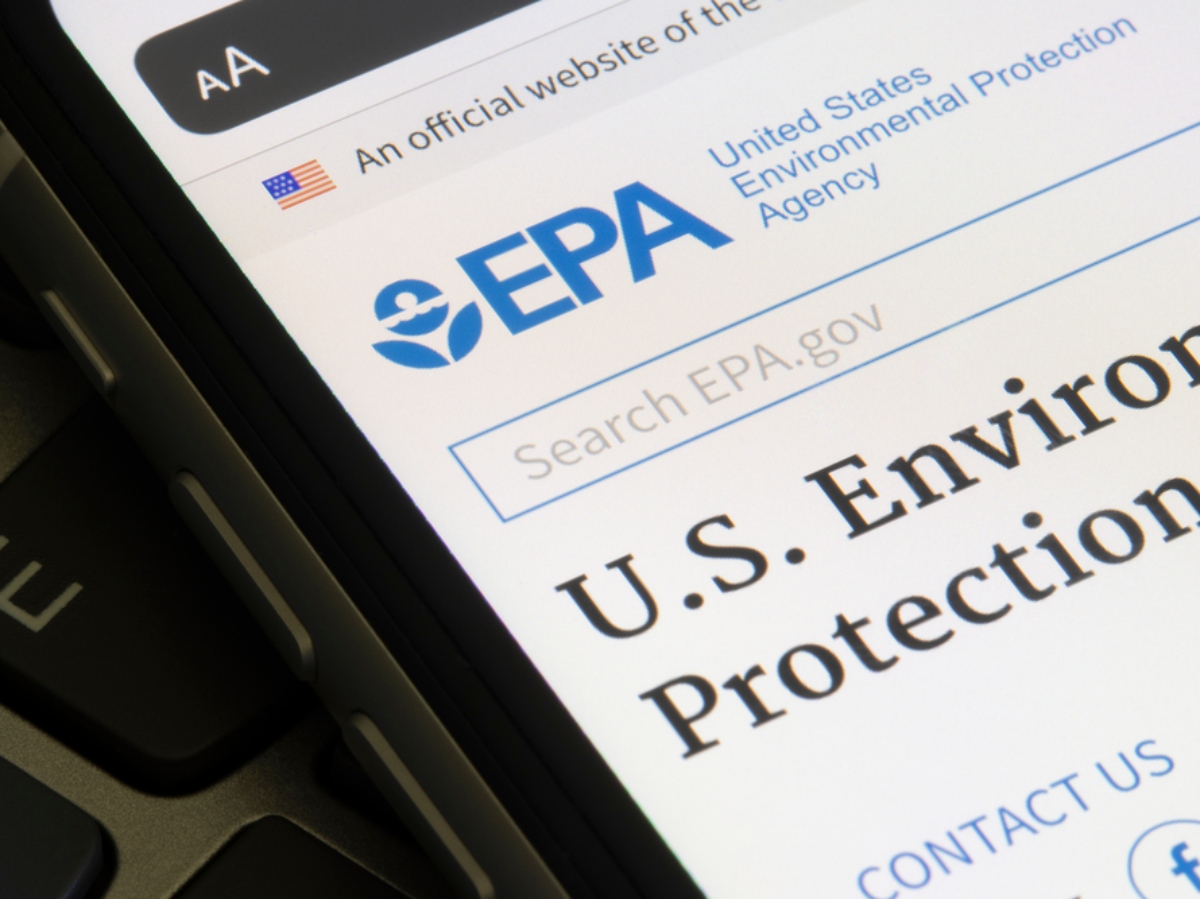There has been a growing concern about PFAS contaminants in the environment. The U.S. Environmental Protection Agency (EPA) has been at the forefront of researching and addressing the issue. Federal departments and agencies have also joined hands to research and devise a plan to address and combat this issue. Recently, the White House released a PFAS report addressing sources of PFAS, toxicity, health effects, removal and destruction, and safer alternatives.
In response to this issue, the EPA has announced its action plan for tackling PFAS contamination. The EPA PFAS proposal addresses the need for a National Primary Drinking Water Regulation (NPDWR) to set legally enforceable MCLs for six PFA contaminants. These contaminants include HFPO-DA (GenX chemicals), PFOA, PFHxS, PFNA, PFOS, and PFBS.
With this action plan, EPA expects to reduce illnesses and deaths caused by PFAS exposure. The EPA PFAS proposal is open to public comment until May 30, 2023.
In this article, we look at the following:
- What PFAS are
- How they enter water sources
- Health risks of PFAS
- Overview of EPA’s proposed action plan for PFAS Regulation
- The four key takeaways from the EPA’s PFAS action plan.
What Are PFAS Contaminants?
Per- and Polyfluoroalkyl Substances (PFAS), commonly known as “forever chemicals,” are a group of artificial chemicals and have been in use in some products since the 1940s. The substances are also in the air, water, and soil. PFAS particles comprise a chain of connected carbon and fluorine, making them harder to break and degrade. The C-F bond is extremely strong, so industries use this chemical in manufacturing their products.
The U.S. has phased out long-chain PFAS (PFOS and PFOA). Despite being phased out, PFAS remains in the environment. Some products that use PFAS as an ingredient include:
- Firefighters foam
- Cleaning products
- Electronics
- Coating, paints, and varnishes
- Non-stick cookware
- Grease-resistant packaging, such as pizza boxes
- Textiles such as waterproof
- Pesticides
- Pharmaceuticals and medical devices such as dental floss and vascular grafts
- Cosmetics and personal care products such as body lotions, moisturizers, lipstick, and nail polish
Common PFAS Contaminants
According to the Centers of Disease Control (CDC), over 9,000 PFAS chemicals exist. However, the most common ones are six:
- Perfluorooctanoic acid (PFOA)
- Perfluorononanoic acid (PFNA)
- Hexafluoropropylene oxide dimer acid (HFPO-DA), commonly, GenX Chemicals
- Perfluorohexane sulfonic acid (PFHxS)
- Perfluorooctane sulfonic acid (PFOS)
- Perfluorobutane sulfonic acid (PFBS)
How Does PFAS Enter Water Sources?
There are many ways PFAS can enter drinking water sources. PFAS can be released into the air through industrial processes. They can also enter the water through landfill sites, agricultural runoff, wastewater treatment discharges, and leaching to underground water bodies if the soil is contaminated through spillage.
Why Is PFAS a Cause for Concern?
PFAS do not break down quickly, making them persistent in the environment, thus the name “forever chemicals.” This means they can accumulate over time in the soil, water, air,
animals and humans, creating potential health risks and environmental impacts.
Some health effects associated with PFAS exposure include:
- Some cancers, such as testicular and kidney cancer
- Decreased immune response to vaccination
- Increased chances of liver damage
- Decreased infant birth weights
- Increase in circulating liver enzymes
- Thyroid disorders and decreased thyroid hormones
- Pregnancy-induced hypertension and preeclampsia
Overview of EPA’s Process for Developing Their Water Regulation Proposal
Here’s an overview of the process EPA is using to develop the PFAS regulation proposal:
- Evaluate data availability: Assessing the data from previous studies.
- Establish MCLG (maximum contaminant level goal): Establish a contaminant level with no known or expected health risk. These levels should allow for a margin of safety.
- Develop rule analyses: Conduct research on health risk reduction and the cost of the proposed regulation and evaluate the effects of policy alternatives.
- Set standards as close as feasible to MCLG: Use available technologies to achieve the regulatory standards with minimum cost.
- Benefit-cost determination: Evaluate the benefits and costs of the proposed regulation to determine if it is economically feasible.
Overview of EPA’s Proposed Action Plan for PFAS Regulation
EPA proposes health-based, non-enforceable MCLGs (Maximum Contaminant Level Goals) for the following common PFAS contaminants.
- PFOA
- PFAS
- PFNA
- PFHXS
- PFBS
- HFPO-DA (GenX Chemicals)
EPA is proposing a national primary drinking water regulation (NPDWR) to establish legally enforceable MCLs for these six PFA contaminants.
These chemicals will be regulated as follows:
- PFOA and PFOS as individual contaminants
- PFHxS, PFNA, GenX Chemicals, and PFBS as a PFAS mixture
Here are our four takeaways from recent EPA PFAS announcements surrounding their action plan.
Key Takeaway #1: Enhanced Monitoring Efforts from Public Water Systems
The proposed action would require public water systems to actively monitor for the six PFAS contaminants and ensure they are below the proposed standards. Furthermore, they will notify the public of the levels of the six PFAS. However, the proposed regulation does not cover more than 23 million American households that rely on water from private wells. It’s worth noting that this action is not final and requires no actions until after EPA considers public input and finalizes the regulation.
Key Takeaway #2: Established Hazard Index for PFAs Contaminants
EPA uses the Hazard Index (HI) approach to evaluate health risks that might arise from chemical mixtures exposure. The Hazard Index is a number that reflects the potential danger of a chemical; the higher the Hazard Index, the greater the potential effect.
EPA proposes that water systems use this tool to limit any mixture containing one or more of PFHxS, PFNA, PFBS, AND GenX Chemicals. PFOA and PFAS are not in the HI since they will be regulated as individual contaminants due to their likely carcinogenicity. To determine the HI water systems would monitor and compare the amount of each of the other four PFAS to its associated Health-Based Water Concentrations (HBWCs). HBWC is the level below which no health effects are expected for PFAS. The proposed HBWCs are:
| Compound | Proposed HBWC (ppt) |
| PFHxS | 9.0 |
| PFNA | 10 |
| PFBS | 2000 |
| GenX Chemicals (HFPO-DA) | 10 |
Key Takeaway #3: New Monitoring Requirements are Anticipated to Start this Year
The EPA expects to finalize the PFAS regulation by the end of 2023. The initial monitoring must be done within three years from the rule promulgation date (expected to be the end of 2023) until the rule becomes effective (scheduled to end in 2026). To establish the baseline levels of PFAS, there are proposed requirements for initial monitoring that can be done in any combination.
- Depending on the size and type of the public water system, the number of samples to be collected within a year can be two or four.
- Recent data on PFAS levels in drinking water can be obtained from various sources. These sources include the fifth Unregulated Contaminant Monitoring Rule (UCMR 5), state-level drinking water occurrence monitoring, or other relevant data collection programs.
The outcomes of the initial monitoring will serve as the foundation for the ongoing compliance monitoring requirements, which include:
- If the monitoring results (based on running annual averages) exceed, every sampling site will get standard, quarterly monitoring.
- Minimize the flexibility of monitoring for sampling locations to once or twice every three years, but only if the result obtained is below ⅓ of the MCLs (i.e., rule trigger level).
If any of the MCLs, then the system will be in violation.
Key Takeaway #4: A Whole Home Water Filtration System Is the Best Protection Against PFAS Contamination
According to the EPA, water systems with drinking water that exceed regulated PFAS MCLS will be required to take action to meet set standards. Water systems can choose the best approach that would match their unique situation. They can install treatment systems or take any other that reduces PFAS to meet MCLs.
EPA evaluated technologies effective for removing all regulated PFAS and identified the following treatment systems as the best available technologies:
- Granulated activated carbon (GAC): Granulated activated carbon (GAC) is among the popular water filtration methods. It’s made from bituminous coal, lignite, wood, coconut shells, or other substances, which come in granular form. GAC uses an adsorption method and is highly porous, making it ideal for removing contaminants from water, especially long-chain PFAS compounds such as PFOA and PFOS.
- Anion Exchange (AIX): Anion exchange uses a resin bed with positively charged ions to attract and capture negatively charged PFAS ions as the water passes.
- Nanofiltration (NF) and Reverse Osmosis (RO): These technologies use high-pressure semipermeable membranes with tiny pores to filter out PFAS contaminants from the water. The NF membranes have slightly larger pores than reverse osmosis membranes and highly reject hardness, while RO rejects all salt. It can effectively remove over 90% of PFAS, including shorter-chain PFAS.
Water systems may use an alternative source to reduce PFAS exposure without installing treatment systems. Homeowners can also use these treatment technologies. While these filtration technologies may be effective individually, a whole home water filtration system that combines different technologies provides better results.
A whole home water filtration system from ONIT Home uses GAC, RO, and multi-stages of filtration to provide clean and contaminant-free water. The system is installed by your main water line, filtering water before it enters your home.
Enjoy Clean and Safe Water With ONIT Home
PFAS are everywhere, even in the most remote places. It’s considered a public health and environmental issue which needs urgent addressing. EPA is making recommendable progress on limiting PFAS exposure. The recent EPA PFAS proposal aims at establishing health-based, non-enforceable MCLGs for six PFAS. According to the EPA, with successful implementation, PFAS-related illnesses will reduce, and lives will be saved. EPA recommends using GAC, ion exchange, nanofiltration, and reverse osmosis treatment technologies to reduce PFAS in drinking water. That’s where ONIT Home comes in!
ONIT’s whole home filtration system will solve all your issues related to water contamination. Our system combines GAC, reverse osmosis, and multi-stages of filtration, filtering PFAS and other contaminants, leaving you with clean, better-tasting water. We also do free water tests, interpret results, and recommend a suitable system that meets your home needs. Call us today at 1-833-433-0331 to speak to our dedicated experts about all your clan water needs. Call upon us and we’ll be ONIT.



